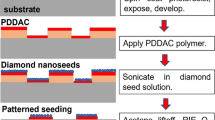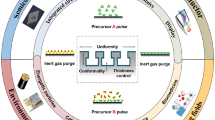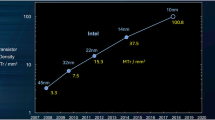Abstract
This paper describes recent advances in MBE HgCdTe technology. A new 3 inch production molecular beam epitaxy (MBE) system, Riber Model 32P, was installed at Rockwell in 1994. The growth technology developed over the years at Rockwell using the Riber 2300 R&D system was transferred to the 32P system in less than six months. This short period of technology transfer attests to our understanding of the MBE HgCdTe growth dynamics and the key growth parameters. Device quality material is being grown routinely in this new system. Further advances have been made to achieve better growth control. One of the biggest challenges in the growth of MBE HgCdTe is the day-to-day control of the substrate surface temperature at nucleation and during growth. This paper describes techniques that have led to growth temperature reproducibility within + - 1°C, and a variation in temperature during substrate rotation within 0.5°C. The rotation of the substrate during growth has improved the uniformity of the grown layers. The measured uniformity data on composition for a typical 3 cm × 3 cm MBE HgCdTe/CdZnTe shows the average and standard deviation values of 0.229 and 0.0006, respectively. Similarly, the average and standard deviation for the layer thickness are 7.5 and 0.06 µm, respectively. P-on-n LWIR test structure photodiodes fabricated using material grown by the new system and using rotation during growth have resulted in high-performance (R0)A, quantum efficiency) devices at 77 and 40K. In addition, 128 × 28 focal plane arrays with excellent performance and operability have been demonstrated.
Similar content being viewed by others
References
J.M. Arias,Properties of Narrow Gap Cadmium-based Compounds, EMIS Datareview Series No. 10, ed. Peter Capper, (Inspec , 1994), p. 30.
J.M. Arias, J.G. Pasko, M. Zandian, J. Bajaj, L.J. Kozlowski, R.E. DeWames and W.E. Tennant,Producibility of II-VI Materials and Devices Vol. 2228, (SPIE, 1994), p. 210.
J. Bajaj, J.M. Arias, M. Zandian, J.G. Pasko, L.J. Kozlowski, R.E. DeWames and W.E. Tennant,J. Electron. Mater. 24, 1067 (1995).
M. Zandian, J.M. Arias, J. Bajaj, J.G. Pasko, L.O Bubulac, and R.E. DeWames,J. Electron. Mater. 24, 1207 (1995).
J.P. Faurie, A. Million, R. Boch and L.J. Tissot,J. Vac. Sci. Technol. A 12, 274 (1994).
T. Skauli, T. Colin and S. Lovold,J. Vac. Sci. Technol. A 12, 274 (1994).
S.M. Johnson, D.R. Rhiger, J.P. Rosbeck, J.M. Peterson, S.M. Taylor and M.E. Boyd,J. Vac. Sci. Technol. B 10, 1499 (1992).
J.S. Chen, U.S. Patent No. 4,897, 152.
H. Shin, J.M. Arias, M. Zandian, J.G. Pasko and R.E. DeWames,J. Electron. Mater. 22, 1039 (1993).
P.W. Norton, P. LoVecchio, G.N. Pultz, J. Hughes, T. Robertson, V. Lukach and K. Wong,Proc. SPIE Symp. on Producibility of II-IV Materials andDevices,Vol. 2228 (1994), p. 73.
Author information
Authors and Affiliations
Rights and permissions
About this article
Cite this article
Bajaj, J., Arias, J.M., Zandian, M. et al. Uniform low defect density molecular beam epitaxial HgCdTe. J. Electron. Mater. 25, 1394–1401 (1996). https://doi.org/10.1007/BF02655040
Received:
Revised:
Issue Date:
DOI: https://doi.org/10.1007/BF02655040




